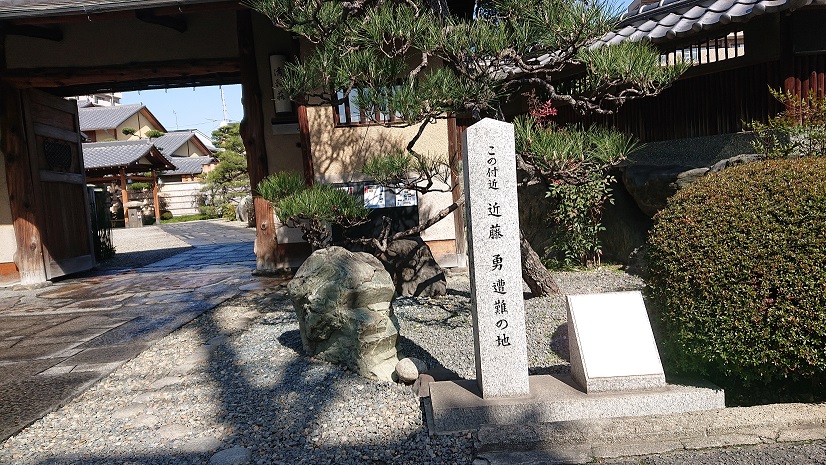Yamatokaido Road
|
In the past, the road going south in this area is traditionally called either "Narakaido (Nara Road)" or "Yamatokaido (Yamato Road)". Nara and Yamato are the areas located in the south of Kyoto, and "Yamato" is an old way of saying "Nara". Narakaido road consists of two routes. The first is "Fushimikaido Road" which goes through the famous sightseeing places such as Fushimiinari shrine, Houtoji temple, and Fujimori shrine. The other is "Takedakaido Road" which crosses Kamogawa river and goes to the Fushimi port through the former Takeda village in Kii County. When Toyotomi Hideyoshi resigned as the Chancellor and moved to a house in Fushimi, Fushimi Road was maintained as the route to travel from Fushimi to Kyoto, the capital then. There are many famous places such as Fushimiinari shrine, Houtoji temple and Fujinomori shrine along the way. It was said that since the Edo Period (from 1603AD), the route was bustling with worshipping and sightseeing visitors. "Honmachi-Dori (Honmachidori street)", a one-way northern road that touches Fushimiinari Shrine approach, is this "Fushimikaido Road". The road that goes further north also connects to the southern gate of Tofukuji temple. Therefore, many travelers who worship and go sightseeing at Tofukuji temple continue southward on foot, and walk through "Fushimikaido" road to Fushimiinari shrine. Being a one-way route, Fushimikaido road was known to be narrow and inadequate for being a physical distribution route. The route to Fushimi port was particularly essential during the Edo Period (about 1603- AD); so Takedakaido road was widened in parallel to Fushimikaido road to transport goods between Kyoto capital and Fushimi port. The present national route, Route 24, is Takedakaido Road. Near the end of the Edo Period, these two roads were the main routes to Kyoto capital from Fushimi port. So the Shinsengumi troop, Ryoma Sakamoto and others had frequently come and gone between the capital Kyoto and Fushimi port using Narakaido Road. On the south side of the Keihan Sumizome station is Sumizome street that connects the Fushimikaido road and Takedakaido road. Along Sumizome street, the "Monument of Isami Kondo Distress"  stands on the right side, in front of the Japanese restaurant
"Seiwa So". stands on the right side, in front of the Japanese restaurant
"Seiwa So".On December 16, 1867, a great decree to restore the imperial rule was issued at Nijojo castle; consequently, the Shinsengumi troop was pursued to Fushimi magistrate's office. Isami Kondo was the leader of Shinsengumi troop. On the way back from a meeting at Nijojo castle on the 18th to take refuge at the Fushimi magistrate's office with his attendants, Isami Kondo was attacked just before entering the castle town of Fushimi and was hit by a bullet on his right shoulder. On January 3 of next year, the battle of Toba Fushimi broke out. Because Isami Kondo was still recovering from his wound in Osakajo castle, Toshizo Hijikata had to take over to direct this battle. |
|
| Thanks to Mr. D.M. |